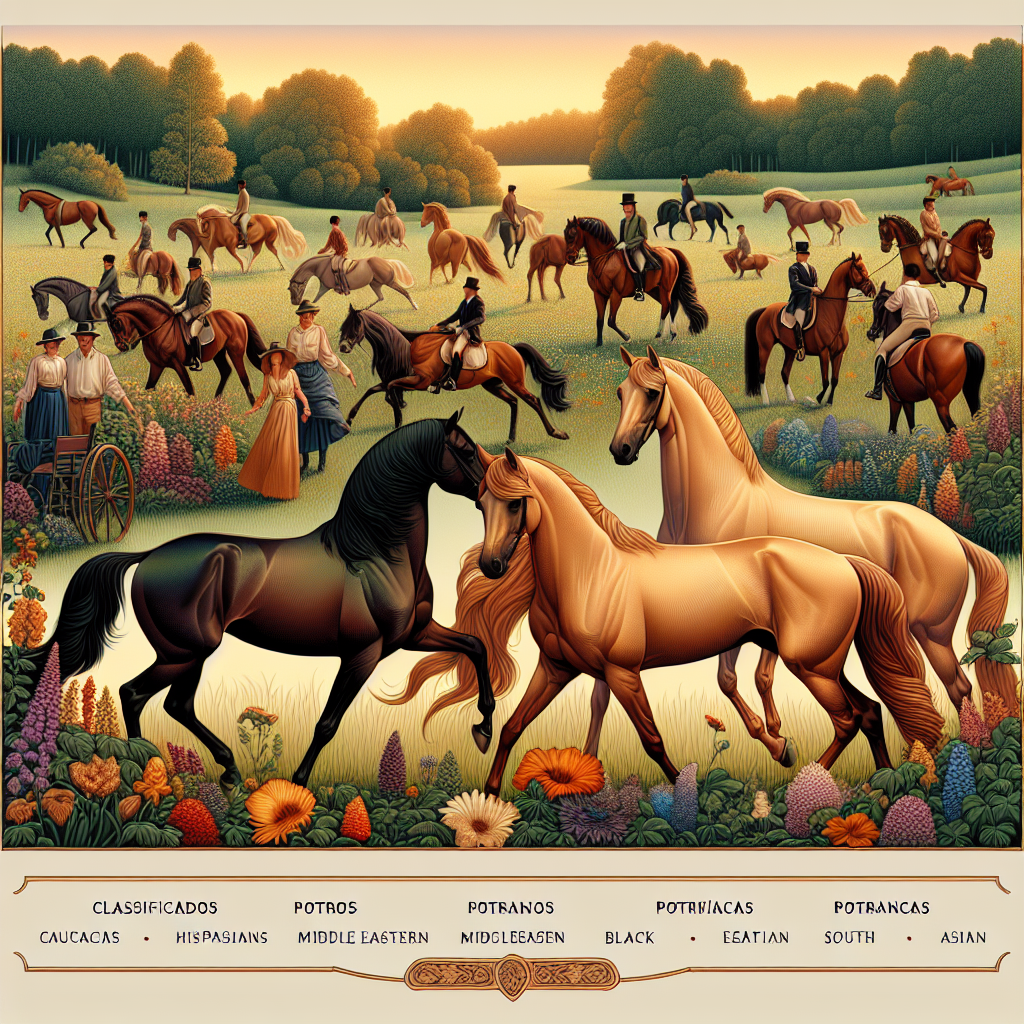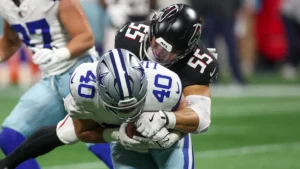Clasificados Potros y Potrancas: Guía para Elegir los Mejores Ejemplares para Cría y Deporte
The world of horse breeding is both fascinating and intricate. Whether you’re an equestrian enthusiast, a seasoned horse breeder, or simply an animal lover, understanding the nuances of clasificados potros y potrancas is essential. This blog post will take you through the ins and outs of classifying colts and fillies, offering insights that can help you make informed decisions in your horse breeding endeavors.
Why Clasificados Potros y Potrancas Matter
When it comes to horse breeding, the clasificados potros y potrancas plays a crucial role. These classifications help breeders and buyers identify the best horses for various purposes, whether it’s for competitive sports, leisure riding, or breeding programs. Proper classification ensures that the right horses are matched with the right owners and trainers, ultimately benefiting both the horses and their human counterparts.
Understanding the classifications of potros y potrancas can also provide valuable insights into a horse’s potential. By examining factors such as lineage, physical attributes, and temperament, breeders can make more informed decisions about which horses to breed and how to raise them. This knowledge can lead to healthier, more capable horses and more successful breeding programs.
In this blog post, we’ll explore the various aspects of clasificados potros y potrancas, from the initial classification process to the specific criteria used in evaluating these young horses. We’ll also discuss the benefits of proper classification and provide tips for breeders and buyers alike.
The Basics of Horse Classification
Horse classification is a systematic approach to evaluating and categorizing horses based on various criteria. In the context of clasificados potros y potrancas, this process typically involves assessing young horses—both colts and fillies—based on factors such as age, breed, conformation, and performance potential.
One of the primary reasons for classifying horses is to ensure that they are suited for their intended purpose. For instance, a horse bred for competitive show jumping may have different physical and temperamental characteristics than one bred for leisure riding. By classifying horses early on, breeders and buyers can better understand a horse’s potential and make more informed decisions.
There are several methods and systems used for classifying horses, each with its own set of criteria and standards. In general, these systems aim to provide a comprehensive evaluation of a horse’s attributes, ensuring that only the best horses are selected for breeding and other purposes.
Key Factors in Clasificados Potros y Potrancas
When it comes to clasificados potros y potrancas, several key factors are considered in the classification process. These factors help determine a horse’s overall quality and potential, providing valuable insights for breeders and buyers.
Age and Development
One of the first factors considered in clasificados potros y potrancas is the age and development of the young horse. Colts and fillies are typically classified at specific ages to ensure that they are evaluated during key stages of their growth and development. This allows for a more accurate assessment of their physical attributes and potential.
During the classification process, experts will examine the horse’s conformation, which refers to its physical structure and proportions. This includes evaluating the horse’s bone structure, muscle development, and overall balance. Conformation is a critical factor in determining a horse’s suitability for various activities, as it can impact the horse’s movement, strength, and endurance.
Lineage and Pedigree
Another important factor in clasificados potros y potrancas is the horse’s lineage and pedigree. A horse’s pedigree provides a detailed record of its ancestry, including information about its parents, grandparents, and other relatives. This information can offer valuable insights into the horse’s genetic potential and the likelihood of inheriting certain traits.
Breeders often place a significant emphasis on pedigree when classifying potros y potrancas. Horses with proven lineages and successful ancestors are generally considered more valuable and desirable for breeding programs. By examining a horse’s pedigree, breeders can make more informed decisions about which horses to include in their breeding programs.
Temperament and Behavior
In addition to physical attributes and lineage, temperament and behavior are also crucial factors in clasificados potros y potrancas. A horse’s temperament can greatly influence its trainability, performance, and overall compatibility with humans. During the classification process, experts will assess the horse’s behavior and disposition, looking for signs of intelligence, curiosity, and willingness to learn.
Horses with calm, cooperative temperaments are often preferred for various disciplines, as they are easier to train and handle. Conversely, horses with aggressive or anxious behaviors may require more specialized training and management. Understanding a horse’s temperament can help breeders and buyers select the most suitable horses for their needs and goals.
Benefits of Proper Classification
Proper classification of potros y potrancas offers numerous benefits for both breeders and buyers. By thoroughly evaluating young horses based on key criteria, stakeholders can make more informed decisions, leading to better outcomes for all involved.
Enhanced Breeding Programs
One of the primary benefits of proper classification is the ability to enhance breeding programs. By selecting horses with desirable attributes and proven lineages, breeders can increase the likelihood of producing high-quality offspring. This can lead to healthier, more capable horses and more successful breeding programs overall.

Improved Performance and Compatibility
Proper classification also helps improve the performance and compatibility of horses in various disciplines. By matching horses with the right physical attributes, temperament, and lineage to their intended purpose, breeders and buyers can ensure that the horses are well-suited for their roles. This can lead to better performance in competitive sports, more enjoyable leisure riding experiences, and overall greater satisfaction for horse owners and trainers.
Increased Market Value
Horses that have been properly classified and evaluated are often considered more valuable in the market. Buyers are generally willing to pay a premium for horses with proven attributes and pedigrees, as they offer greater potential for success in breeding and performance. This increased market value can benefit breeders by providing higher returns on their investments and helping them build a reputation for producing high-quality horses.
Tips for Breeders and Buyers
Whether you’re a breeder looking to enhance your breeding program or a buyer searching for the perfect horse, there are several tips to keep in mind when it comes to clasificados potros y potrancas.
Conduct Thorough Research
Before making any decisions, it’s essential to conduct thorough research on the classification process and the specific criteria used in evaluating potros y potrancas. This will help you understand what to look for in a young horse and how to make informed decisions based on the available information.
Work with Experts
Working with experienced professionals can provide valuable insights and guidance throughout the classification process. Equine veterinarians, trainers, and breeders with expertise in clasificados potros y potrancas can offer valuable advice and help you make the best choices for your needs and goals.
Prioritize Quality Over Quantity
When it comes to breeding and purchasing horses, it’s important to prioritize quality over quantity. Focus on selecting horses with proven attributes, desirable pedigrees, and suitable temperaments, rather than simply trying to amass a large number of horses. This approach will lead to better outcomes and more successful breeding programs in the long run.
Understanding the Classification Process
The classification process for potros y potrancas involves several steps and evaluations, each designed to provide a comprehensive assessment of the young horse’s attributes and potential. Understanding this process can help breeders and buyers make more informed decisions and ensure that they are selecting the best horses for their needs.
Initial Assessment
The initial assessment typically involves a thorough examination of the young horse’s physical attributes, including conformation, muscle development, and overall balance. Experts will also evaluate the horse’s movement and gait, looking for signs of strength, agility, and coordination.

Pedigree Analysis
Pedigree analysis is another critical component of the classification process. This involves examining the horse’s lineage and ancestry to determine its genetic potential and the likelihood of inheriting certain traits. Horses with proven pedigrees and successful ancestors are generally considered more valuable and desirable for breeding programs.
Behavioral Evaluation
Behavioral evaluation is also an important aspect of clasificados potros y potrancas. Experts will assess the horse’s temperament and behavior, looking for signs of intelligence, curiosity, and willingness to learn. Horses with calm, cooperative temperaments are often preferred for various disciplines, as they are easier to train and handle.
Conclusion
Clasificados potros y potrancas play a crucial role in the world of horse breeding, providing valuable insights into the potential and attributes of young horses. By understanding the classification process and the key factors involved, breeders and buyers can make more informed decisions and ensure that they are selecting the best horses for their needs and goals.
Whether you’re an equestrian enthusiast, a seasoned horse breeder, or simply an animal lover, understanding clasificados potros y potrancas can help you appreciate the complexities and nuances of horse breeding. By prioritizing quality over quantity, conducting thorough research, and working with experts, you can enhance your breeding programs and achieve greater success in the world of horse breeding.
If you’re interested in learning more about clasificados potros y potrancas or need assistance with your breeding program, consider reaching out to experienced professionals for guidance and support. With the right knowledge and resources, you can make informed decisions and achieve your goals in the world of horse breeding.














Post Comment